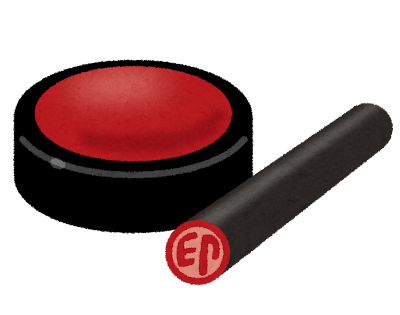Hello! Nice to meet you (again)! How are you guys?
It is the blog, How Unique Japan.
Let us ask you first.
What do you think about working?
We do not doubt that you would imagine a boring, dull, and tiny environment among you.
There are also multiple procedures to obtain contracts or permissions to perform tasks if you work in the office.
In comparison, Japanese workplaces may be more complicated due to the numerous procedures involved, as many businesses still rely on paper documents with a STAMP instead of just a signature.
Indeed. Everybody in Japan uses it (the stamp) in daily life/work.
It is called Hanko. So, this time, we would like to write about that stamp.

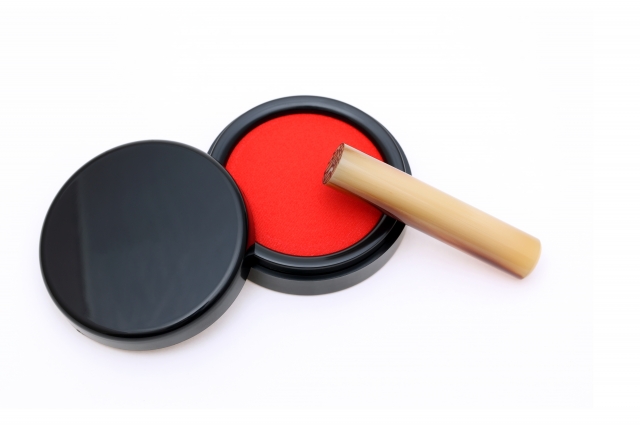
Why is Hanko complicating?
We said it was complicated. The reason is that there are officially six kinds of Hanko. During any business procedure, we (Japanese) use them on occasion, even for confirmations of paperwork. Let’s see what we have. (Those are with Roman pronunciation.)
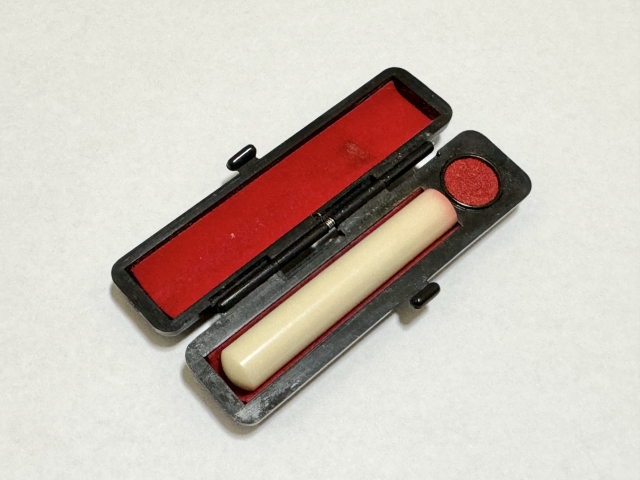
- Jitsu In – It is with official registration for any official documents, for example, insurance.
- Mitome In – We use it for package delivery service, instead of a sign.
- Ginko In – The stamp is for some businesses with the Bank.
- Sya In – The Hanko with a corporation name.
- Daihyousya In – The stamp is for a representative person in any business (for example, boss, or chairperson).
And the last one.
Teisei In – We use it to correct errors on documents we created. We would need to press the stamp to ensure we fixed this part (especially for the vital confirmation).
They are the kinds of Hanko we use in daily life and work. You would get how Japanese businesses take slow and complicated procedures.
The demerits are not over. Nowadays, many workplaces use telework and remote work systems.
Even so, the Hanko system interrupts the invention of work, even paperless work.
Because they cannot change into digitized.

Why do the Japanese not quit the Hanko system in their business?
It is due to its history.
The history

Approximately 2’300 years ago, the stamp came from China. Since then, the ancient Japanese government has used it for any important decision in a political situation – for example, creating laws or any contracts following the advanced politics of China.
Thus, Hanko was usually decorated gorgeously.
Some of them were Gold in old times.
The merit
Although there are demerits to using the Hanko, this style has one advantage.
In any Western country, a third party is needed to confirm any legally binding contract whenever a significant business transaction is underway.
Besides, the sign must be the person himself.

On the other hand, in Japan, if someone has the Jitsu In, they can contract for any business deals (not all), even if they are not the proper person.
It can save costs for the third party to ensure the contract and time.
However, it can be another problem. Because if someone steals the stamp, the bad guy could make any bad deal.
The demerit

Those merits look fine. However, there is one more demerit we have not written about.
Everyone can imitate the other person with their Jitsu-In when they want to contract with Banks, even DEBT.
Yes. Bad guys sometimes steal the stamp to make such a deal with banks.
Do you remember that the Jitsu-in has the power to enter into any contracts with Banks?
Thus, there are many crimes in which some victims incur debt.
It is terrible.
Unique Hanko
So, a business style with Hanko is a little strict.
However, we have unique Hanko that we can sometimes customize as our original (sadly, it can’t be registered).
Please look at the pictures below.
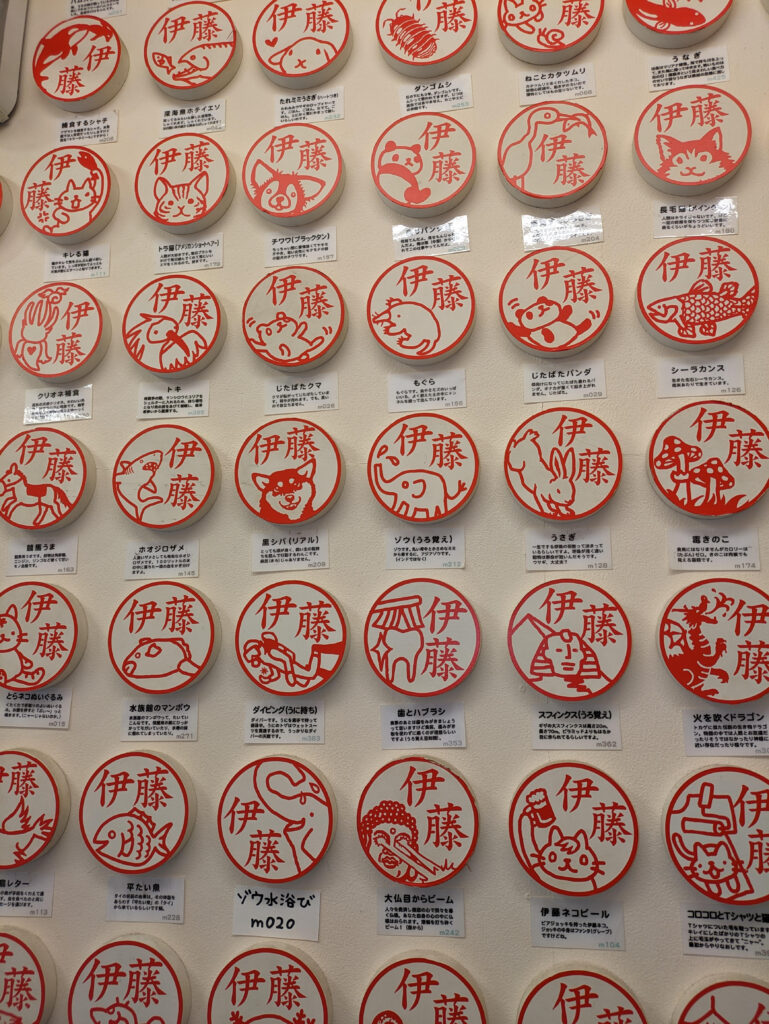
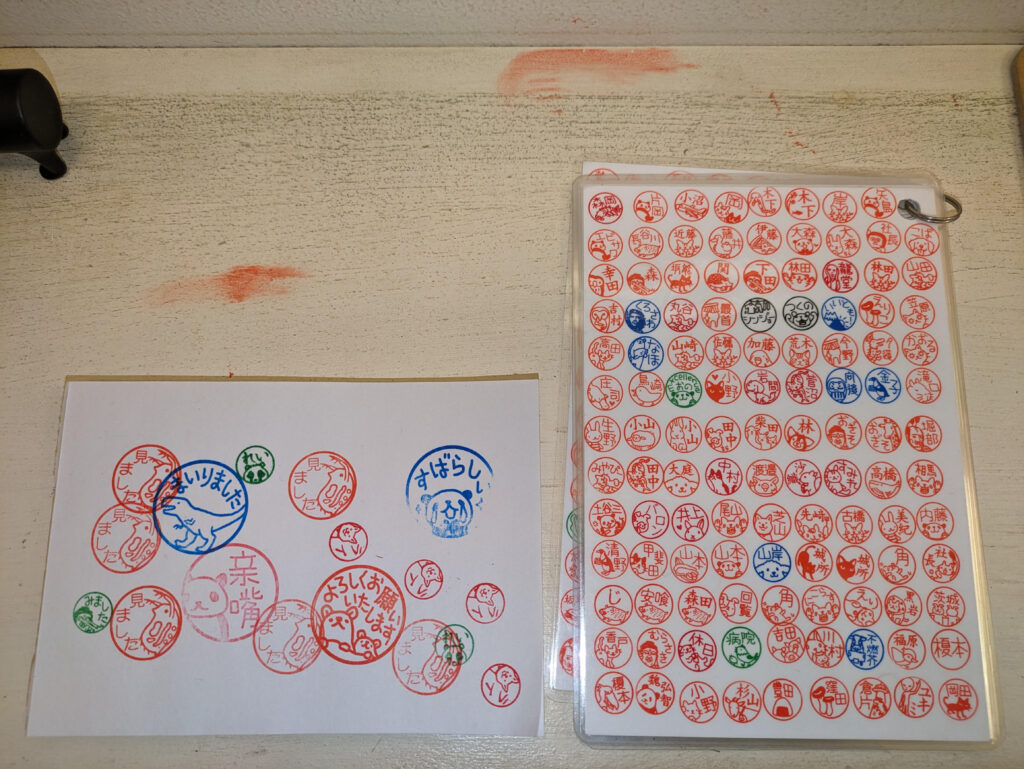
As you see, several funny stumps are everywhere, especially in stationery shops. Besides, some Hanko shops will accept customized orders with alphabetical characters.
To close
Indeed. There are complicated ways to do anything in Japan that everyone follows mindlessly.
Why do some Japanese still willingly do that?
If you want to know, the front page of our blog can give a tip for it.
Now, we have multiple articles categorized into four.
They are about Japanese lifestyle, the Edo era, Japanese foods, and religions.
Try them!
All right! It is all today! Thank you so much for reading this article!
See you on the articles coming soon!!
